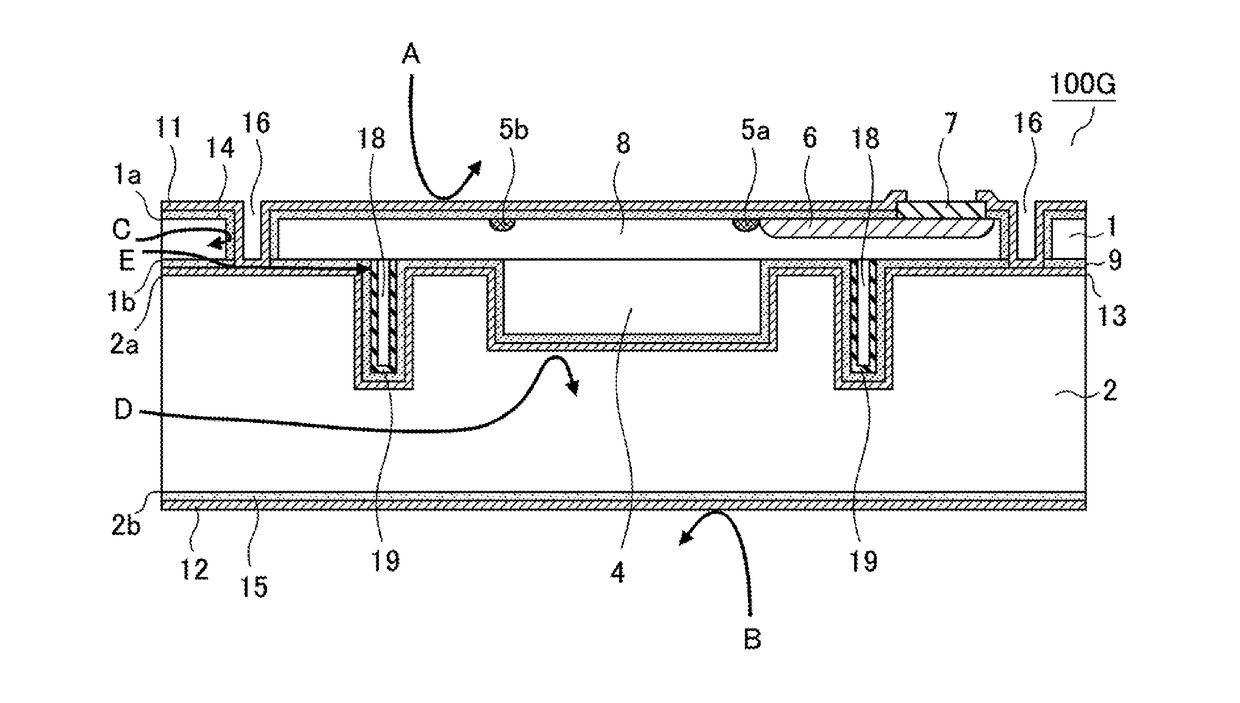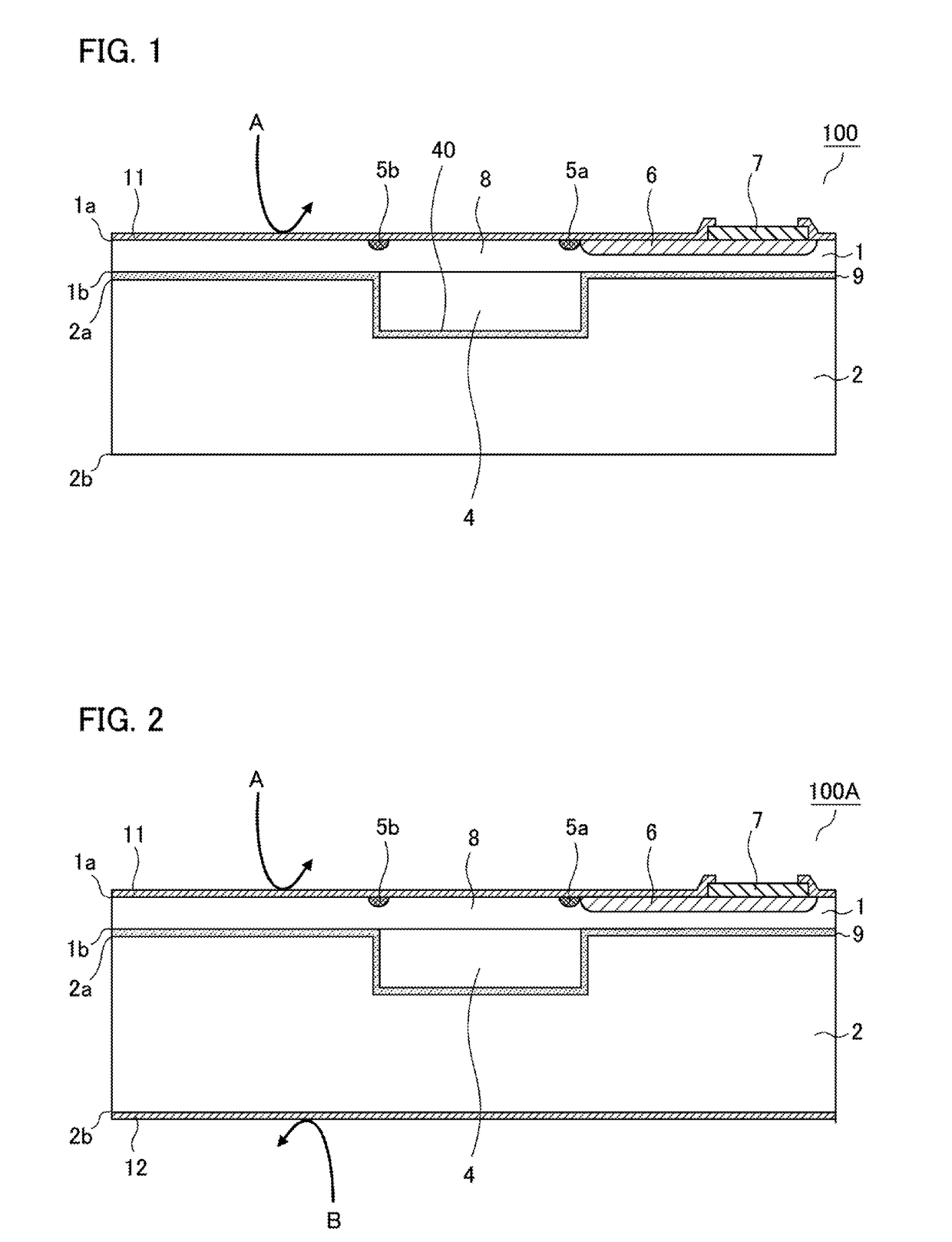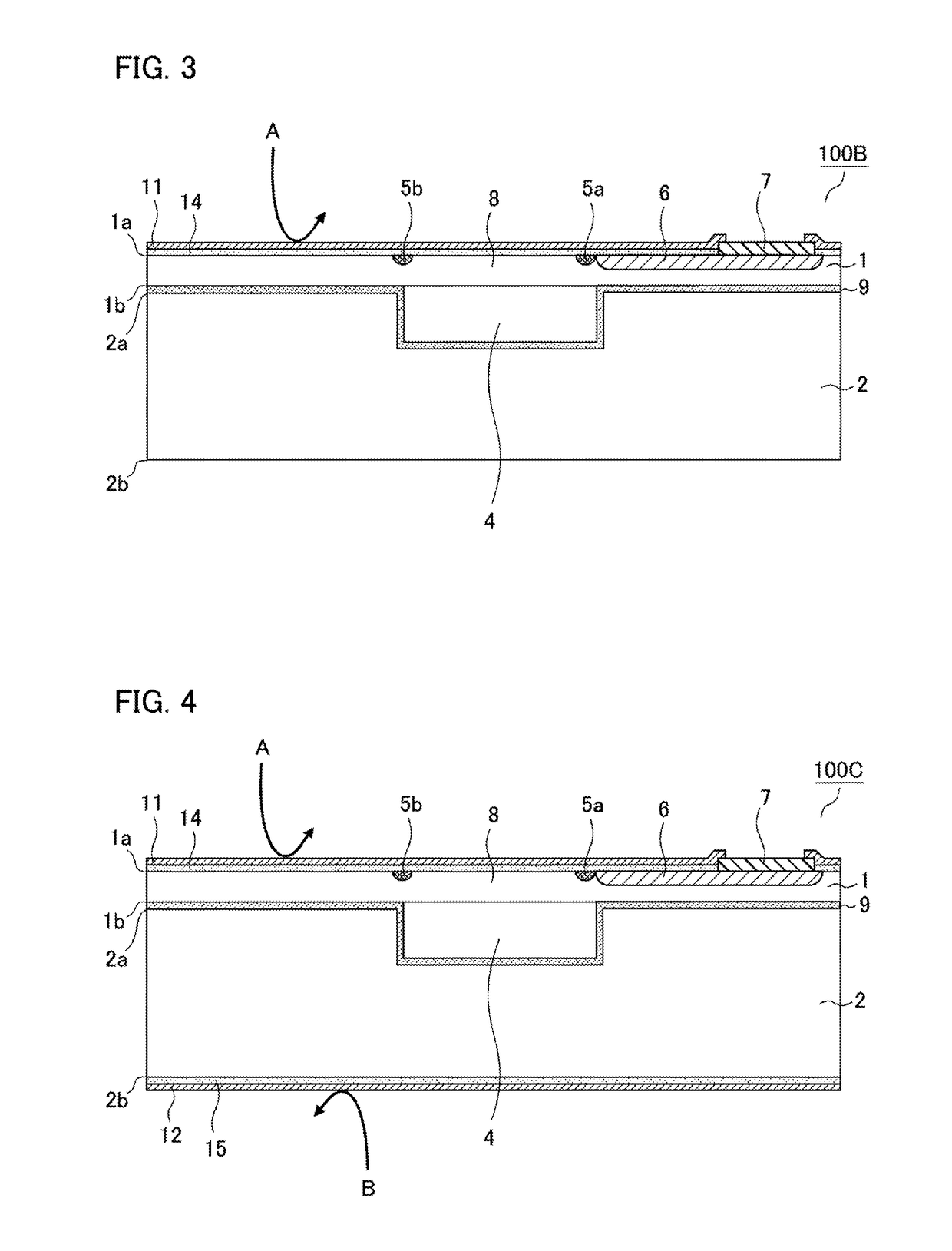Semiconductor pressure sensor
a technology of magnetic field and pressure sensor, which is applied in the direction of fluid pressure measurement, fluid pressure measurement by electric/magnetic elements, instruments, etc., can solve the problems of difficult pressure measurement, many problems to be improved, and reduced price, and achieve high precision
- Summary
- Abstract
- Description
- Claims
- Application Information
AI Technical Summary
Benefits of technology
Problems solved by technology
Method used
Image
Examples
first embodiment
[0041]Hereafter, a description will be given, based on the drawings, of a semiconductor pressure sensor according to First Embodiment of the invention. In the drawings, the same reference signs are given to identical and equivalent portions. FIG. 1 shows a semiconductor pressure sensor element according to First Embodiment. A semiconductor pressure sensor element 100, which measures the pressure of a hydrogen gas supplied to a fuel cell in a fuel cell system, includes a first silicon substrate 1 having one principal surface 1a and another principal surface 1b, which are opposite to each other, and a second silicon substrate 2 having one principal surface 2a and another principal surface 2b, which are opposite to each other, as shown in FIG. 1.
[0042]The semiconductor pressure sensor element 100 has a diaphragm 8, which is a pressure receiving portion, in the first silicon substrate 1. The semiconductor pressure sensor element 100 has, around the diaphragm 8, piezoresistors 5a and 5b ...
second embodiment
[0059]FIG. 2 shows a semiconductor pressure sensor element according to Second Embodiment of the invention. A semiconductor pressure sensor element 100A according to Second Embodiment includes, in addition to the same components as those of the semiconductor pressure sensor element 100 (FIG. 1) according to First Embodiment, the second hydrogen permeation protection film 12 provided on the side of the principal surface 2b of the second silicon substrate 2. As the other components are the same as those of First Embodiment, a description thereof will be omitted.
[0060]As the area on the side of the principal surface 2b of the second silicon substrate 2 exposed to hydrogen is also large, in the same way as on the front surface side of the diaphragm 8, the side of the principal surface 2b of the second silicon substrate 2 becomes the permeation path of the large hydrogen flux shown by the arrow B in FIG. 2. However, as the distance from the principal surface 2b of the second silicon subs...
third embodiment
[0064]FIGS. 3 and 4 show semiconductor pressure sensor elements according to Third Embodiment of the invention. Semiconductor pressure sensor elements 100B and 100C according to Third Embodiment each include, immediately below the hydrogen permeation protection film, a stress relaxation film for relaxing the tensile residual stress of the hydrogen permeation protection film. As the other components are the same as those of First Embodiment or Second Embodiment, a description thereof will be omitted.
[0065]When using a silicon nitride film (SiNx) as the first hydrogen permeation protection film 11 or second hydrogen permeation protection film 12, the tensile residual stress of the silicon nitride film increases as the value x is increased in order to obtain high hydrogen permeation protection performance. Depending on a pressure range to be measured or the design of the diaphragm 8, the tension of the diaphragm 8 increases due to tensile residual stress, and the pressure detection sen...
PUM
 Login to View More
Login to View More Abstract
Description
Claims
Application Information
 Login to View More
Login to View More - R&D
- Intellectual Property
- Life Sciences
- Materials
- Tech Scout
- Unparalleled Data Quality
- Higher Quality Content
- 60% Fewer Hallucinations
Browse by: Latest US Patents, China's latest patents, Technical Efficacy Thesaurus, Application Domain, Technology Topic, Popular Technical Reports.
© 2025 PatSnap. All rights reserved.Legal|Privacy policy|Modern Slavery Act Transparency Statement|Sitemap|About US| Contact US: help@patsnap.com



